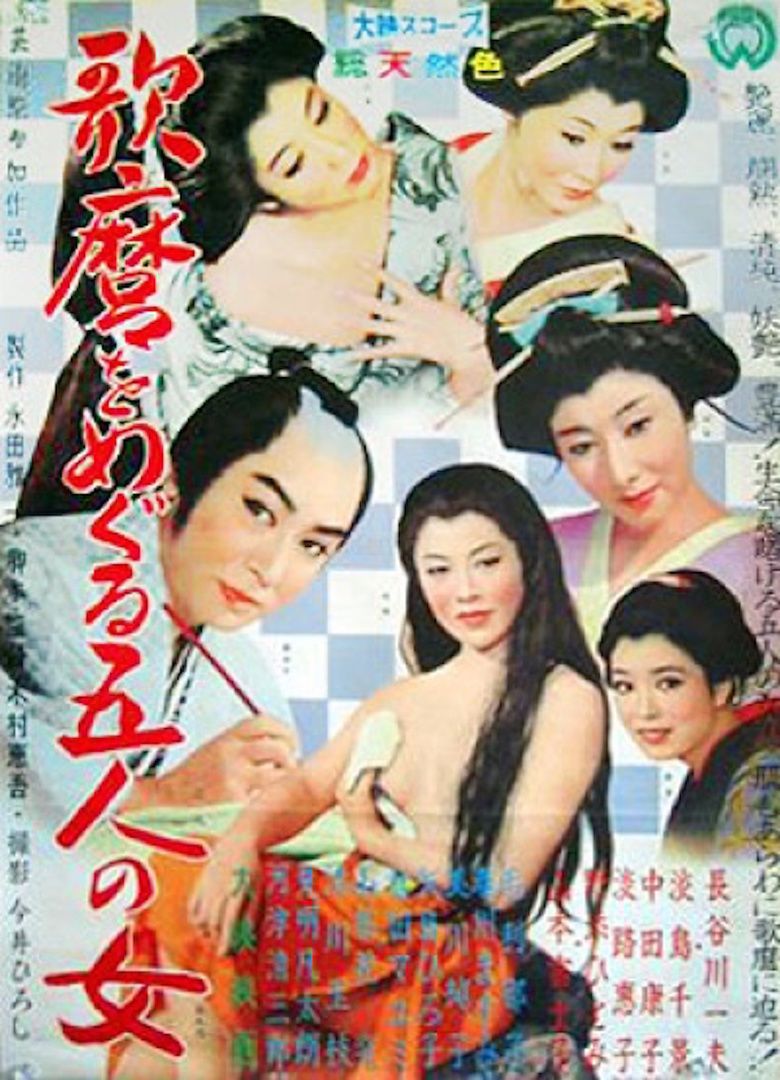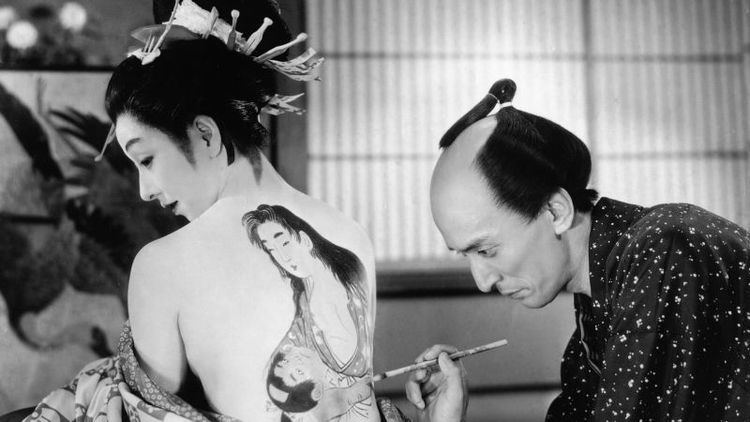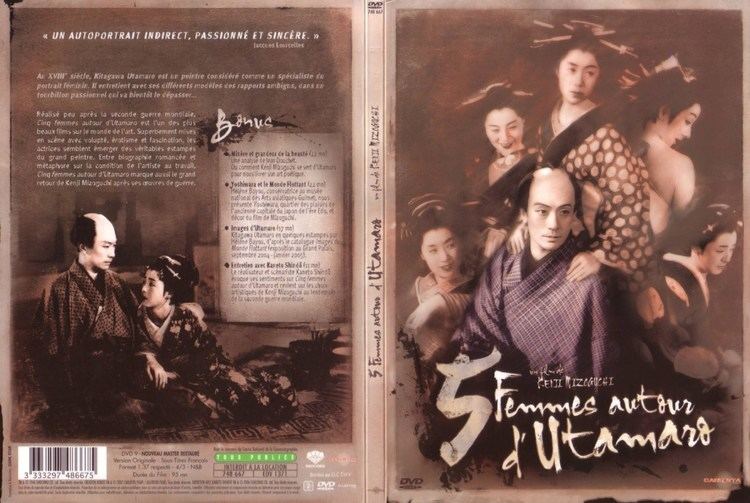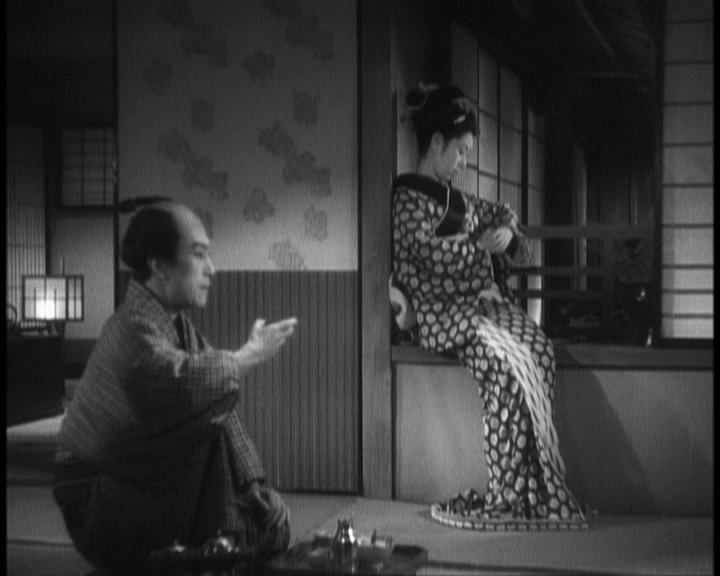Utamaro and His Five Women
7.4 /10 1 Votes
Duration | 7.2/10 IMDb Genre Drama Country Japan | |||||||||||||||||||||||||||||||||
 | ||||||||||||||||||||||||||||||||||
Cast Minosuke Bandô (Utamaro), (Okita), Kôtarô Bandô (Seinosuke), Hiroko Kawasaki (Oran), Toshiko Iizuka (Takasode), Kyôko Kusajima (Oman)Release date 17 December 1946 Genres Drama, Biographical film, Japanese Movies Similar movies Directed by Kenji Mizoguchi, Artist movies, Dramas | ||||||||||||||||||||||||||||||||||
Original utamaro and his five women do not steal
Utamaro and His Five Women or Five Women Around Utamaro (Japanese: 歌麿をめぐる五人の女, Hepburn: Utamaro o meguru gonin no onna) is a 1946 Japanese film directed by Kenji Mizoguchi. It is based on the novel of the same title by Kanji Kunieda, itself a fictionalized account of the life of printmaker Kitagawa Utamaro. It was Mizoguchi's first film made under the American occupation.
Contents
- Original utamaro and his five women do not steal
- November novelet the world in devotion utamaro and his five women kenji mizoguchi 1946
- Theme
- Synopsis
- The Five Women
- Production history
- The Film as Autobiography
- References

November novelet the world in devotion utamaro and his five women kenji mizoguchi 1946
Theme

Mizoguchi was fascinated by painting and had trained as a painter as a young man. Kitagawa Utamaro (1756-1806) was 'possibly the greatest of all the portraitists of the floating world' - he painted also idyllic outdoor scenes, Yoshiwara festivals and drinking bouts, bathers and shell-divers, as well as erotica. The film dramatically presents this sense of range, and openness to life's variety, and contrasts the old official court-approved style of painting, called kano with the new, dynamic form of painting known as ukiyo-e (literally:paintings of the floating world).
Synopsis

The story is set in Edo (now Tōkyō) in Japan.

The film starts with a parade of samurai and their concubines (oiran, distinguished by their high shoes) along an avenue of cherry trees. Koide, called Seinosuke by his woman Yukie (Kotaro Bando), an artist/samurai apprenticed to a Kanō master, leaves the parade and visits a print shop where he sees a woodcut print by Utamaro that boasts of ukiyo-e 's superiority to the official style. Enraged, he goes to a tea-house to find Tsutaya Jūzaburō, the owner of the print shop, to express his displeasure. Word is leaked to Utamaro to avoid the tea-shop, but instead he goes there directly to investigate. Koide then challenges him to a duel. Utamaro counter-challenges him with a different kind of duel––a painting contest.

Utamaro is declared the winner by Koide, who then acknowledges Utamaro's superiority. Koide then follows Utamaro as a disciple.

We then hear that Edo's best tattoo artist lacks the confidence to draw on the back of a famously beautiful courtesan, Orui. Utamaro asks her permission to paint directly onto her back (for the tattoo artist to then tattoo over). She is proud to accept. Shozaburo falls in love with Orui and elopes with her to the countryside, leaving behind his fiancee, Okita.

Utamaro goes to a lake-side with his friends and spies Oman, the beautiful daughter of a commoner, amongst a whole group of bathing girls. He takes her to be his long-term model.
Upsetting the magistrates with some of his prints, he is sentenced to be handcuffed for 50 days.
Okita tracks them down and brings Shozaburo back to Edo, but later discovers he is still seeing Orui and stabs him in front of her, then kills Orui. Okita then goes to Utamaro's house to await her fate, knowing she will be executed for the crime, but explaining that she had to be true to her own feelings.
At the final scene, Utamaro's handcuffs are removed and he instantly returns to drawing. The film ends with a collection of his most famous prints falling one by one in front of the camera.
The Five Women
Production history
Utamaro and His Five Women was made during the seven-year Allied occupation of Japan which followed World War II. At the time, film production was overseen by representatives of the Occupation forces, and Jidaigeki (period films) like Utamaro were rarely made, as they were seen as being inherently nationalistic or militaristic.
The Film as Autobiography
Though Utamaro and His Five Women is based on the life of Kitagawa Utamaro, it is frequently seen as being an autobiographical work.
In her article on the film for the Australian film journal Senses of Cinema, film critic Freda Freiberg writes:
"Mizoguchi's regular scriptwriter Yoda, who worked with him (more precisely, for him) for 20 years, claimed in his memoirs that in the script for this film he was 'almost unconsciously' drawing a portrait of Mizoguchi through Utamaro. The equation Utamaro=Mizoguchi has been irresistible to most critics as the two artists did have a lot in common. Both of them worked in a popular mass-produced medium operated by businessmen, and chafed under oppressive censorship regimes; both frequented the pleasure quarters and sought the company of geishas; but, most significantly, they both achieved fame for their portraits of women. In a highly charged scene in this film, Utamaro paints, directly on the back of a beautiful courtesan, a sketch that is later tattooed into her skin. One could say that this creative act (and the passion the artist displays in executing it) literalises the fact that both artists achieved fame on the backs of women – relying on them to arouse and express themselves, emotionally and aesthetically."
References
Utamaro and His Five Women WikipediaUtamaro and His Five Women IMDb Utamaro and His Five Women themoviedb.org
